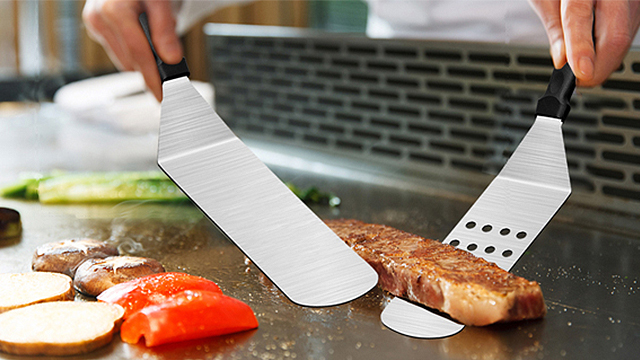Griddle Scraper Angles Explained: Master BBQ Techniques
Written By James Morgan
Barbecue enthusiasts know that every great grilling session requires the right tools and techniques. Among these tools, the humble griddle scraper holds a special place. But understanding the various angles at which to use this tool can significantly elevate your grilling game. In this article, we dive deep into the often-overlooked art of using a griddle scraper, specifically focusing on the angles that can make or break your cooking experience.

Why Griddle Scrapers Matter
For anyone who loves the smoky aroma of food sizzling on a grill, the importance of a clean cooking surface cannot be overstated. A griddle scraper is essential in maintaining your grill's cleanliness, ensuring that old food residue doesn't taint the flavors of your new creations. But it's not just about cleanliness; the right scraping technique can also improve cooking efficiency and even prolong the life of your griddle.
Using the scraper correctly involves understanding the angles at which it should be applied. Incorrect angles can lead to ineffective scraping, leaving behind stubborn residue. It might even damage the surface of your griddle. Thus, mastering these angles is crucial for any serious barbecuer.
Understanding The Right Angles
When using a griddle scraper, the angle at which you hold the tool makes all the difference. Here are a few pointers to guide you:
The 45-Degree Angle
This is perhaps the most commonly used angle when scraping a griddle. Holding the scraper at a 45-degree angle allows you to apply enough pressure to remove food particles and grease effectively without damaging the griddle surface. This angle provides a balance that is both aggressive enough to clean yet gentle enough to protect.
The 30-Degree Angle
For more delicate griddle surfaces or when dealing with light residue, a 30-degree angle might be more appropriate. This angle allows for a gentler scrape that is perfect for non-stick surfaces or when you want to ensure that the seasoning on your griddle remains intact.
Angles for Tough Residue
When dealing with particularly stubborn grime, you might need to adjust to a 60-degree angle. This steeper angle enables you to exert more force, effectively loosening and removing tough residue. However, caution is advised as too much pressure at this angle can lead to scratches or damage.
Practical Tips for Using a Griddle Scraper
Beyond just angles, there are practical considerations to keep in mind when using a griddle scraper:
- Always ensure your griddle is slightly warm before scraping. This helps in loosening the residue, making it easier to clean.
- Use a scraper with a comfortable grip to reduce hand fatigue during extended cleaning sessions.
- Regularly maintain your scraper by cleaning it after each use and checking for any signs of wear or damage.
Check out our detailed guide on storing griddle tools to ensure your scraper stays in top condition.
Common Mistakes to Avoid
Even seasoned grillers can make mistakes when it comes to using a griddle scraper. Here are some common pitfalls:
- Using the wrong angle for the surface type.
- Applying too much pressure, which can lead to scratches.
- Neglecting to clean the scraper itself, which can transfer old food particles back onto the griddle.
For tips on maintaining balance and control while using griddle tools, visit this balance and control guide.
For the Love of Grilling
Understanding the nuances of using a griddle scraper, particularly the angles involved, is a skill that can significantly enhance your barbecue experiences. Whether you're cooking for a crowd or just enjoying a quiet meal outdoors, the right techniques ensure that each meal is as delicious as the last.
For more insights into the best tools for your griddle, consider checking out external resources like Tom's Guide for recommendations on starter accessories.

FAQ
What is the best angle for using a griddle scraper?
Typically, a 45-degree angle is considered ideal for most cleaning tasks as it balances pressure and effectiveness.
Can using the wrong angle damage my griddle?
Yes, using an incorrect angle, especially with too much pressure, can scratch or damage the surface of your griddle.
How often should I clean my griddle scraper?
It's best to clean your scraper after every use to ensure it remains effective and doesn't harbor old food particles.
This article contains affiliate links. We may earn a commission at no extra cost to you.



